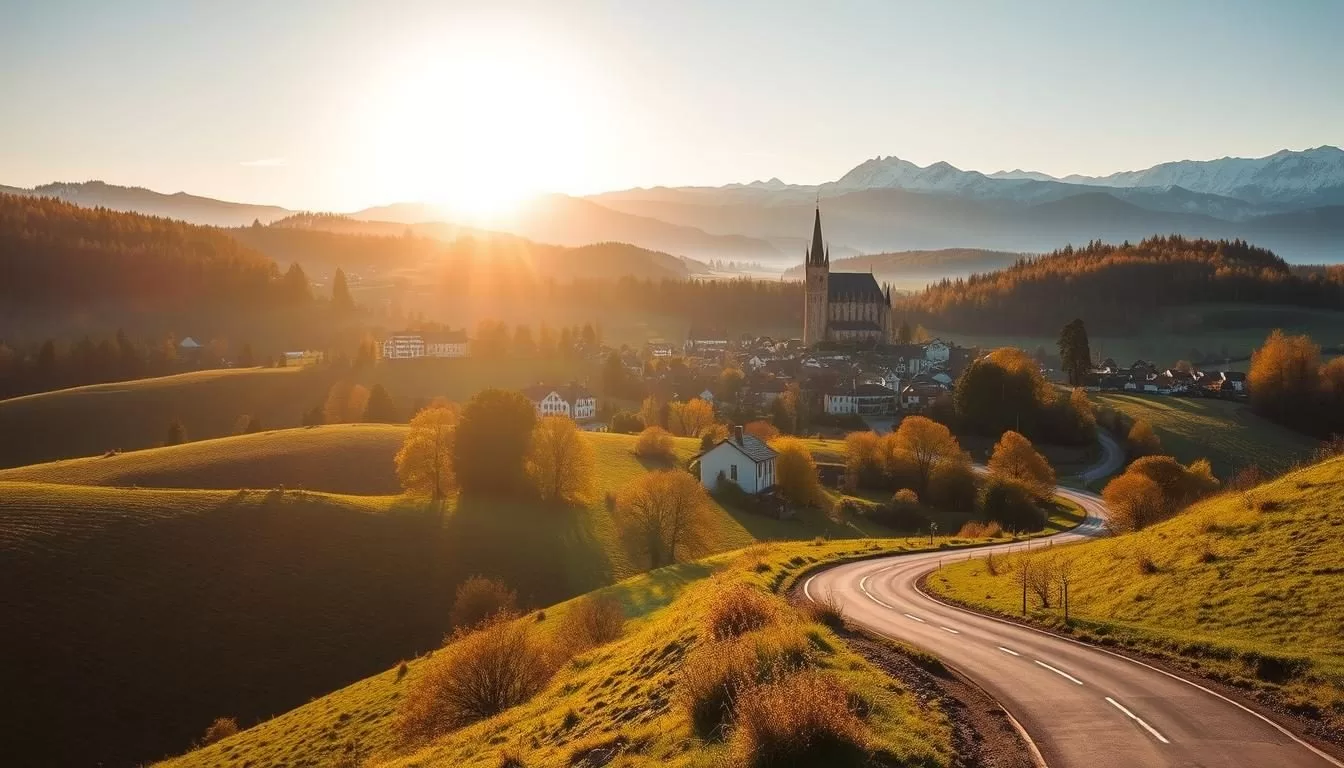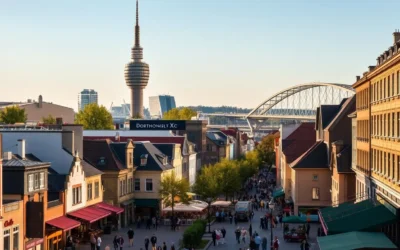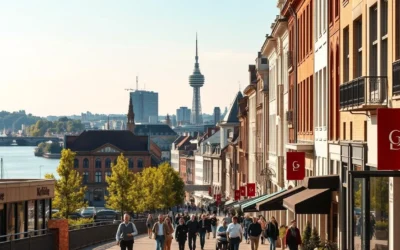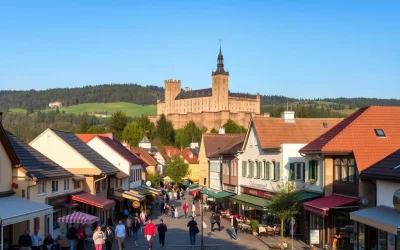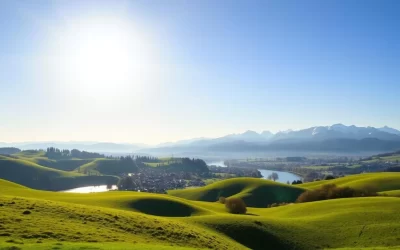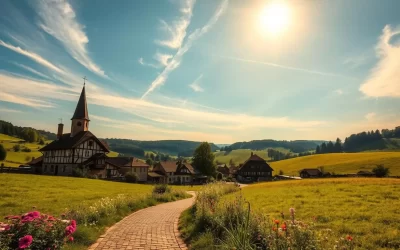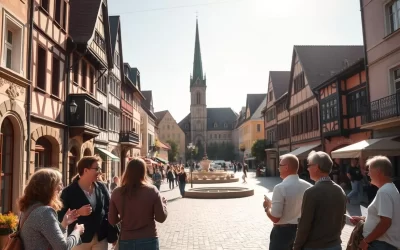Planning a trip to Saxony-Anhalt? Timing is everything. This region offers a mix of stunning landscapes, rich history, and vibrant festivals. Choosing the right month can make your adventure unforgettable.
From mild spring days to snowy winters, the weather here varies throughout the year. Each season brings unique opportunities to explore outdoor activities, cultural events, and historical sites. Whether you’re hiking in the Harz Mountains or attending a local festival, understanding the climate is key.
This guide will help you navigate the region’s weather patterns. You’ll learn how to plan your day to maximize your experience. Ready to embark on a journey tailored to the seasons? Let’s dive in!
Introduction: Embark on Your Weather-Savvy German Adventure
Timing your visit can transform your travel experience. Whether you’re exploring blooming landscapes or attending festive events, the best time to go ensures you make the most of every moment.
Understanding the weather patterns helps you avoid unexpected rain or crowds. This guide covers everything from outdoor festivals to cozy seasonal traditions, giving you the tools to plan effectively.
With the perfect blend of climate information and cultural insights, your adventure will be truly unique. Ready to dive into a journey tailored to the seasons? Let’s get started!
Understanding Germany’s Seasonal Climate
Exploring the seasonal shifts can enhance your travel plans. The region experiences four distinct seasons, each with its own charm and challenges. From blooming spring landscapes to snowy winters, the climate shapes activities and traditions.
Seasonal Weather Patterns and Tourist Impact
Germany’s weather varies significantly throughout the year. In spring, temperatures range from 40 to 65°F, making it ideal for outdoor exploration. Summer brings warmth, with averages between 65 and 75°F, attracting peak tourist crowds.
Autumn sees cooler temperatures and vibrant foliage, while winter can dip to 23°F. These shifts influence visitor numbers and festival schedules. For example, Oktoberfest in late September draws millions, while winter markets thrive in colder months.
How Climate Influences Local Traditions
The seasonal climate deeply impacts cultural events. Spring festivals like Walpurgisnacht celebrate renewal with bonfires. Summer is packed with outdoor concerts and fairs, while autumn highlights harvest festivals and pumpkin carving events.
Winter traditions revolve around Christmas markets and cozy gatherings. Understanding these patterns helps you align your visit with the most vibrant cultural experiences.
| Season | Average Temperature | Key Events |
|---|---|---|
| Spring | 40-65°F | Walpurgisnacht, Easter Markets |
| Summer | 65-75°F | Oktoberfest, Outdoor Concerts |
| Autumn | 50-65°F | Harvest Festivals, Pumpkin Carving |
| Winter | 23-40°F | Christmas Markets, Winter Sports |
Saxony-Anhalt, Germany: Best Months for a Weather-Savvy Trip
Choosing the right month can transform your visit. Each season offers unique experiences, from vibrant festivals to serene landscapes. Whether you prefer the warmth of summer or the cozy charm of winter, timing is key to making the most of your trip.
In summer, cities come alive with outdoor events and bustling markets. The warm weather is perfect for exploring historic sites and enjoying local cuisine. However, this is also the peak tourist season, so expect larger crowds and higher prices.
On the other hand, winter brings a magical atmosphere. Cities are adorned with festive lights, and Christmas markets offer a unique charm. The colder months are quieter, making it easier to enjoy the region’s beauty without the hustle and bustle.
This guide provides month-by-month recommendations to match your preferences. Whether you’re drawn to lively festivals or peaceful countryside escapes, there’s an ideal time for every traveler.
| Season | Highlights | Considerations |
|---|---|---|
| Summer | Outdoor festivals, warm weather | Peak crowds, higher prices |
| Winter | Christmas markets, cozy atmosphere | Colder weather, fewer events |
Local cultural events also play a big role in shaping your experience. For example, Oktoberfest in late September draws millions, while winter markets thrive in colder months. These traditions add depth to your visit, making it truly memorable.
Monthly Weather Overview in Magdeburg, Sachsen-Anhalt
Magdeburg’s weather offers a mix of seasonal surprises. From chilly winters to warm summers, the climate here shapes your travel plans. Understanding the trends ensures you pick the best time visit this historic place.
Temperature Trends and Rainfall Data
Magdeburg experiences distinct seasonal shifts. January is the coldest month, with average lows around 0°C. July is the warmest, reaching up to 20°C, perfect for outdoor activities.
Rainfall varies throughout the year. July is the wettest month, with around 80 mm of rain. Winter months see less precipitation, but snowfall is common in January and February.
Here’s a quick breakdown of monthly averages:
| Month | Average High (°C) | Average Low (°C) | Rainfall (mm) |
|---|---|---|---|
| January | 2 | -2 | 40 |
| July | 24 | 14 | 80 |
Sunshine is abundant from May to June, with 8-9 hours per day. This makes it an ideal time visit for outdoor exploration. Plan your trip around these trends to enjoy the place fully.
Rainfall peaks in July, so pack accordingly. Understanding these patterns helps you avoid unexpected weather and make the most of your adventure.
Optimal Time for Outdoor Activities and Festivals
Spring and summer bring vibrant energy to the region, perfect for outdoor adventures. The shift from blooming landscapes to warm, sunny days creates an ideal setting for exploring festivals and scenic trails. Whether you’re hiking, biking, or attending local events, these seasons offer something for everyone.
Spring and Summer Highlights
This is the best time year for outdoor activities. Spring temperatures range from 40 to 65°F, making it perfect for long hikes and nature walks. As summer arrives, the warmth invites you to explore bikeways and enjoy open-air markets.
Occasional rain can refresh the environment, adding a touch of magic to your adventures. Light snowfall in early spring can also enhance the charm of the season, especially in higher altitudes.
Must-See Seasonal Events
Spring and summer are packed with festivals and events. Walpurgisnacht, celebrated at the end of April, marks the arrival of spring with bonfires and traditional dances. Summer brings Oktoberfest, attracting millions with its lively atmosphere and cultural richness.
Here’s a quick guide to key events and activities:
| Season | Event | Activity |
|---|---|---|
| Spring | Walpurgisnacht | Bonfires, nature walks |
| Summer | Oktoberfest | Outdoor markets, cultural events |
Plan your itinerary around these optimal weather windows for extra enjoyment. Whether you’re exploring trails or attending festivals, spring and summer offer unforgettable experiences.
Navigating Tourist Crowds and Seasonal Pricing
Traveling during quieter times can make your trip more enjoyable and affordable. Off-peak months like early fall or late winter offer a chance to explore without the usual hustle. You’ll find fewer crowds, lower prices, and a more relaxed atmosphere.
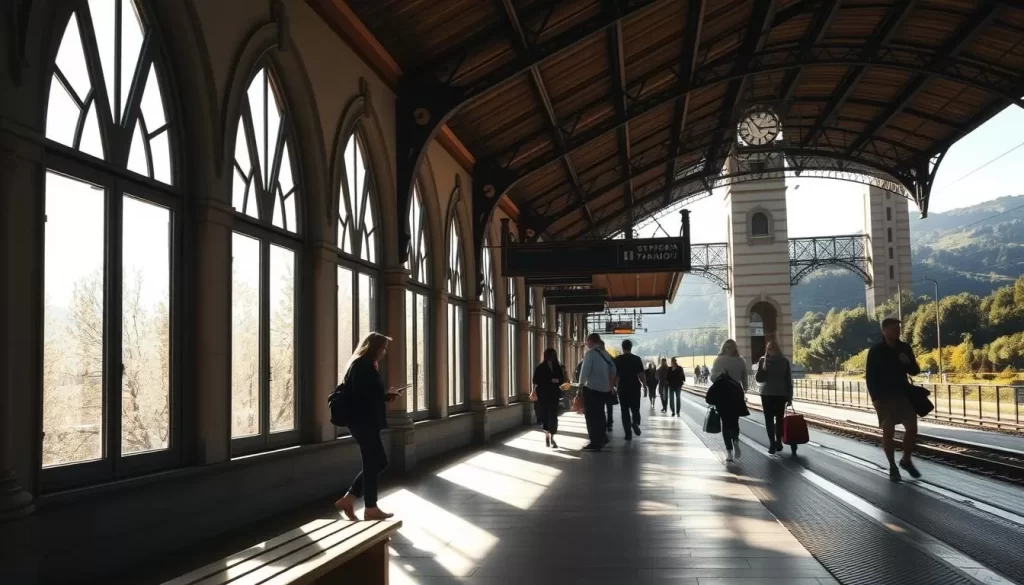
Why Off-Peak Travel is Worth It
Visiting during fall brings cooler temperatures and stunning foliage. The evenings are pleasant, perfect for strolling through historic towns or enjoying local cuisine. With fewer tourists, you can take your time at popular sites without feeling rushed.
Winter, despite the chill, has its own charm. Shorter nights are illuminated by festive lights and bustling markets. While the weather may be colder, the cozy atmosphere and unique attractions make it worthwhile. Plus, you’ll save on accommodations and flights.
Benefits of Fewer Crowds
Lower tourist numbers mean you can enjoy attractions without long lines. Museums, landmarks, and restaurants are more accessible, allowing you to fully immerse yourself in the experience. Seasonal discounts on tours and activities also stretch your budget further.
For example, early fall offers a balance of mild weather and fewer visitors. Late winter, with its occasional snow, transforms the landscape into a picturesque wonderland. Both seasons provide opportunities for peaceful exploration and memorable moments.
Making the Most of Your Trip
Smart planning ensures a rewarding and budget-friendly adventure. Consider visiting during these quieter periods to avoid peak prices and crowds. Whether you’re exploring historic sites or enjoying local festivals, off-peak travel lets you experience the region at its best.
By choosing the right time, you’ll not only save money but also create lasting memories. Embrace the charm of fall evenings or the magic of winter nights for a truly unique journey.
Essential Packing Tips for Changing Weather Conditions
Adapting to changing weather conditions starts with the right wardrobe. As a tourist, you’ll want to pack items that can handle sudden shifts in the local climate. Layering is your best friend, allowing you to adjust to temperature changes throughout the day.
Choose clothing in neutral colors like black, gray, or beige. These shades are versatile and can be mixed and matched easily. A lightweight jacket, a scarf, and a pair of comfortable shoes are must-haves for any trip.
Don’t forget waterproof gear. Unexpected rain showers can happen in any season, so a compact umbrella or a raincoat is essential. Being prepared ensures you stay dry and comfortable, no matter the weather.
Here’s a quick checklist for your suitcase:
- Layering pieces (e.g., cardigans, thermal tops)
- Neutral-colored clothing for versatility
- Waterproof jacket or umbrella
- Comfortable walking shoes
- Accessories like gloves and a hat for colder months
Packing smartly not only keeps you comfortable but also enhances your enjoyment. When you’re prepared for the local climate, you can focus on exploring and creating unforgettable memories.
Experiencing Local Cultural Events and Festivities
Immerse yourself in the vibrant culture of the region through its lively festivals and markets. These events are not just celebrations but a part of the area’s identity, offering a glimpse into its rich history and traditions. Whether you’re visiting for a day or a week, these festivities will leave a lasting impression.
Traditional Celebrations and Markets
Local markets and parades are a cornerstone of the community. They bring people together, showcasing handmade crafts, regional delicacies, and live performances. These events often take place throughout the week, giving you plenty of opportunities to join in the fun.
One of the most iconic celebrations is the Christmas market. Held in December, it transforms the town into a winter wonderland. Stalls are filled with festive treats, ornaments, and gifts, while carolers and musicians add to the merry atmosphere. This event is deeply rooted in history, dating back centuries.
Another must-see is the carnival parade, held in late winter or early spring. Colorful costumes, lively music, and dancing fill the streets, creating an unforgettable experience. These events are a part of the region’s cultural fabric, offering a unique way to connect with locals.
| Event | Time of Year | Highlights |
|---|---|---|
| Christmas Market | December | Festive stalls, carolers, winter treats |
| Carnival Parade | Late Winter/Early Spring | Costumes, music, dancing |
| Harvest Festival | Autumn | Local produce, traditional games, live music |
Planning your visit around these events allows you to fully immerse yourself in local life. Each celebration offers a unique part of the region’s story, making your trip truly memorable. Don’t miss the chance to experience the heart of the community through its vibrant traditions.
Iconic German Festivals: From Oktoberfest to Christmas Markets
Discover the heart of German culture through its iconic festivals. These events are more than just celebrations—they’re a part of the region’s identity. From the lively Oktoberfest to the enchanting Christmas markets, each festival offers a unique experience.
![]()
Festival dates may change slightly each year, but their cultural importance remains. For example, Oktoberfest typically runs from late September to early October. This timing allows visitors to enjoy the last days of summer heat while transitioning into cooler autumn evenings.
Summer festivals like Oktoberfest are bustling with energy. The warm weather encourages outdoor celebrations, beer gardens, and lively music. In contrast, winter festivals like Christmas markets bring a cozy, magical atmosphere. The cooler temperatures create the perfect backdrop for twinkling lights and festive treats.
Navigating crowded events can be challenging, but there are ways to find quieter moments. Arriving early or visiting on weekdays helps you avoid the busiest times. Planning ahead ensures you make the most of these unforgettable experiences.
Here’s a quick guide to some of the most iconic festivals:
| Festival | Time of Year | Highlights |
|---|---|---|
| Oktoberfest | Late September to Early October | Beer gardens, traditional music, parades |
| Christmas Markets | December | Festive stalls, mulled wine, holiday lights |
| Deutsches Weinlesefest | October | Wine tastings, parades, cultural events |
These festivals are central to the German cultural experience. Whether you’re raising a stein at Oktoberfest or sipping mulled wine at a Christmas market, these events will leave a lasting impression. Plan your visit to coincide with these celebrations for a truly memorable trip.
Weather Insights for Major Cities: Berlin, Munich, and Hamburg
Understanding the unique weather patterns of Berlin, Munich, and Hamburg can enhance your travel plans. Each city offers distinct climate experiences that shape your visit. From sunny days to rainy afternoons, knowing what to expect helps you make the most of your trip.
City-Specific Climate Variations
Berlin’s weather is known for its unpredictability. Rainfall averages 570 mm annually, with July and August being the wettest months. Temperatures range from 0°C in January to 24°C in July, making summer ideal for outdoor activities.
Munich experiences a more continental climate. Winters can be chilly, with temperatures dropping to -1°C in January. Summers are warm, reaching up to 25°C in July. The city’s annual rainfall is around 1,000 mm, with June and July seeing the most precipitation.
Hamburg’s maritime climate brings milder winters and cooler summers. January temperatures average 1°C, while July highs reach 23°C. The city receives about 800 mm of rain annually, with July and August being the wettest months.
How Climate Affects Daily Schedules
Daylight hours vary significantly across the cities. In summer, Berlin enjoys up to 16 hours of daylight, while Munich and Hamburg have around 15 hours. Winter days are shorter, with only 7-8 hours of sunlight. Plan your activities accordingly to maximize your time outdoors.
Rainy days are common in all three cities. Berlin has about 106 rainy days per year, while Munich and Hamburg experience around 130. Packing a waterproof jacket or umbrella ensures you stay comfortable during unexpected showers.
Best Times to Visit and Local Events
Berlin is vibrant in summer, with warm weather perfect for exploring parks and historic sites. Winter brings festive charm, especially during the Christmas market season. Plan your visit between May and September for the best weather.
Munich’s festival-driven climate makes it a year-round destination. Oktoberfest in late September is a highlight, while winter markets in December offer a cozy atmosphere. Summer is ideal for outdoor activities and cultural events.
Hamburg’s maritime climate makes it pleasant in spring and summer. The city’s harbor festivals and outdoor markets thrive during these months. Winter is quieter but offers a unique charm with its Christmas markets and festive lights.
| City | Best Time to Visit | Key Events |
|---|---|---|
| Berlin | May – September | Christmas markets, summer festivals |
| Munich | June – October | Oktoberfest, winter markets |
| Hamburg | April – September | Harbor festivals, Christmas markets |
Each city’s climate and events offer unique experiences. Whether you’re exploring Berlin’s parks, enjoying Munich’s festivals, or strolling through Hamburg’s harbor, timing your visit ensures a memorable trip.
Planning Your Itinerary Around Regional Weather Variations
Crafting your travel plans around regional weather ensures a seamless and enjoyable experience. By understanding local climate trends, you can design an itinerary that maximizes your adventure while minimizing disruptions.
Customizing Your Visit Based on Climate Data
Start by researching the typical weather patterns for your destination. For example, if you’re visiting during the fall, expect cooler temperatures and vibrant foliage. This is also the perfect time to explore local markets and festivals like Oktoberfest, which attracts millions of visitors annually.
Here’s how to align your plans with the climate:
- Check monthly weather averages for temperature and rainfall.
- Plan outdoor activities during dry, sunny periods.
- Have backup indoor options for rainy days.
Correlating weather data with event schedules ensures you don’t miss out on key experiences. For instance, summer is ideal for outdoor concerts, while winter brings festive Christmas markets.
Strategies for Adjusting Itineraries on the Fly
Weather can be unpredictable, so flexibility is key. Keep an eye on daily forecasts and be ready to adjust your plans. If rain is expected, swap a hiking trip for a museum visit or a cozy café.
Here are some tips for staying adaptable:
- Use weather apps for real-time updates.
- Pack versatile clothing for changing conditions.
- Book flexible tickets for attractions and transportation.
Balancing planned activities with spontaneous adventures ensures you make the most of your trip. For example, if a local festival pops up unexpectedly, embrace the opportunity to immerse yourself in the culture.
Smart planning not only enhances your experience but also adds value to your travel. By aligning your itinerary with regional weather variations, you’ll create unforgettable memories while staying comfortable and prepared.
Balancing Festivals, Traditions, and Weather Considerations
Balancing festivals and weather can make your trip unforgettable. Vibrant celebrations and unpredictable weather patterns often go hand in hand. Planning ahead ensures you enjoy both cultural immersion and comfortable conditions.
To schedule your visit effectively, research local events and seasonal weather trends. For example, summer festivals like Oktoberfest thrive in warm weather but attract large crowds. Winter markets, on the other hand, offer a cozy atmosphere but require bundling up.
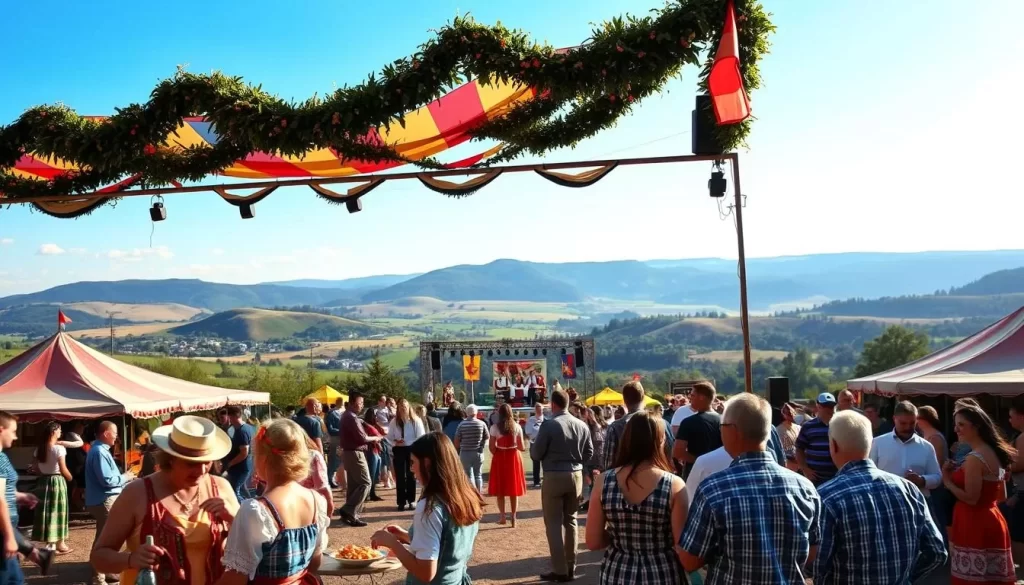
- Check event calendars and weather forecasts before booking.
- Plan outdoor activities during dry, sunny periods.
- Have indoor alternatives for rainy or cold days.
Strategic planning ensures you experience the best of both worlds. For instance, visiting in early fall lets you enjoy harvest festivals and mild weather. Late winter offers festive markets and fewer tourists.
“The key to a successful trip is aligning your plans with both cultural events and weather conditions.”
Throughout the course of a year, each season brings unique opportunities. Spring offers blooming landscapes and Easter markets. Summer is perfect for outdoor concerts and fairs. Autumn highlights harvest celebrations, while winter transforms cities into festive wonderlands.
Here’s a quick guide to balancing festivals and weather:
| Season | Festivals | Weather Considerations |
|---|---|---|
| Spring | Easter Markets, Walpurgisnacht | Mild temperatures, occasional rain |
| Summer | Oktoberfest, Outdoor Concerts | Warm weather, peak crowds |
| Autumn | Harvest Festivals, Pumpkin Carving | Cooler temperatures, vibrant foliage |
| Winter | Christmas Markets, Winter Sports | Cold weather, festive atmosphere |
By aligning your itinerary with both events and weather, you’ll create a harmonious and fulfilling trip. Thoughtful preparation ensures you make the most of every moment, no matter the season.
Maximizing Your Travel Experience with a Flexible Schedule
A flexible schedule can turn unexpected changes into memorable adventures. Whether it’s sudden weather shifts or last-minute festival announcements, adaptability ensures you make the most of your journey. By staying open to spontaneity, you’ll uncover hidden gems and avoid the stress of rigid plans.
Tips for Adjusting Your Plans On-the-Go
Keeping your itinerary adaptable allows you to seize opportunities as they arise. For example, if a local activity or event pops up unexpectedly, you can easily rearrange your day. This approach also helps you avoid heavy crowds by visiting popular spots during off-peak hours.
Here’s how to stay flexible while traveling:
- Use weather apps to monitor real-time conditions and adjust outdoor plans accordingly.
- Book flexible tickets for attractions and transportation to accommodate changes.
- Pack versatile clothing to handle sudden shifts in weather or activity types.
Spontaneity can lead to unforgettable experiences. For instance, stumbling upon a local market or joining a street performance adds a unique touch to your trip. Embracing these moments enhances both your efficiency and fun.
Traveling with an open mindset also helps you adapt to international adjustments. Time zone changes, cultural differences, or unexpected delays become easier to navigate when you’re prepared to pivot. This approach ensures you make the most of every activity in a dynamic travel environment.
By staying flexible, you’ll not only avoid stress but also create lasting memories. Whether it’s exploring a new part of the world or enjoying a spontaneous adventure, adaptability is the key to a fulfilling journey.
Expert Recommendations for a Weather-Savvy Trip
To make the most of your journey, expert insights can guide you through the region’s weather and cultural highlights. Planning your visit around seasonal trends ensures you experience the best of the area while avoiding unnecessary challenges.
One key tip is to avoid peak tourist seasons. Summer months, while vibrant, often come with crowded attractions and higher prices. Instead, consider visiting during early fall or late spring. These periods offer mild weather and fewer crowds, allowing you to fully immerse yourself in the local culture.
Aligning your itinerary with seasonal events can also enhance your trip. For example, autumn is perfect for harvest festivals and exploring scenic trails. Winter, on the other hand, transforms the region into a festive wonderland with Christmas markets and cozy traditions.
Here are some actionable tips to stay ahead of weather changes:
- Check daily forecasts and pack versatile clothing.
- Plan outdoor activities during dry, sunny periods.
- Have indoor alternatives for unexpected rain or cold.
By following these expert recommendations, you’ll not only enjoy a smoother journey but also create lasting memories. Whether you’re exploring historic sites or attending local festivals, thoughtful planning ensures a fulfilling experience.
| Season | Recommendations | Benefits |
|---|---|---|
| Spring | Visit blooming gardens and Easter markets | Mild weather, fewer crowds |
| Summer | Attend outdoor concerts and festivals | Warm weather, vibrant atmosphere |
| Autumn | Explore harvest festivals and scenic trails | Cooler temperatures, stunning foliage |
| Winter | Experience Christmas markets and cozy traditions | Festive charm, quieter attractions |
Expert advice helps you navigate the region’s unique climate and cultural offerings. By choosing the right time and staying flexible, you’ll enjoy a truly unforgettable adventure.
Insider Tips for Sustainable and Budget-Friendly Travel
Exploring the country sustainably can enrich your travel experience while keeping costs low. By adopting eco-friendly practices and smart budgeting, you can enjoy authentic cultural moments without breaking the bank.
One of the best ways to save money is by avoiding peak tourist seasons. Visiting during quieter months not only reduces expenses but also lets you experience the country without the crowds. For example, early fall offers mild weather and fewer tourists, making it ideal for outdoor activities.
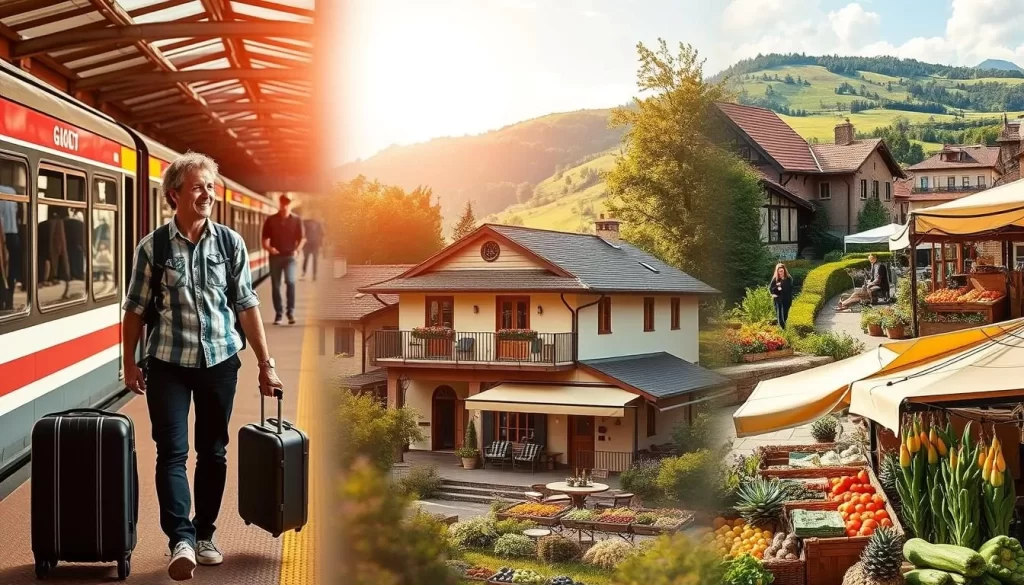
Local parades and outdoor events are excellent free or low-cost entertainment options. These gatherings often showcase the region’s rich heritage and provide a chance to mingle with locals. Pack a picnic and enjoy the festivities under the warm sun.
Using public transportation is another sustainable and budget-friendly choice. Germany’s well-organized transit system offers day tickets and city-specific travel cards, allowing unlimited rides at a fraction of the cost. This not only saves money but also reduces your carbon footprint.
Dining at local eateries instead of tourist hotspots is a great way to cut costs while enjoying authentic cuisine. Moderately priced restaurants offer delicious meals without the hefty price tag. Plus, supporting local businesses contributes to the community’s economy.
By combining these tips, you can create a travel plan that’s both sustainable and affordable. Thoughtful preparation ensures you make the most of your journey while respecting the environment and your budget.
Conclusion
Your adventure begins with thoughtful planning and a keen eye on the weather. Understanding the dynamic climate and cultural calendar ensures a seamless and enjoyable experience. From packing essentials to adjusting your itinerary, every detail matters.
Daylight variations and temperature degrees play a crucial role in your comfort. Plan outdoor activities during sunny periods and have indoor alternatives for unexpected changes. This balance allows you to make the most of every moment.
Use this guide as your roadmap to create unforgettable memories. Whether you’re exploring vibrant festivals or serene landscapes, thoughtful preparation ensures a fulfilling journey. Take the next step and start planning your adventure today!
The above is subject to change.
Check back often to TRAVEL.COM for the latest travel tips and deals.
